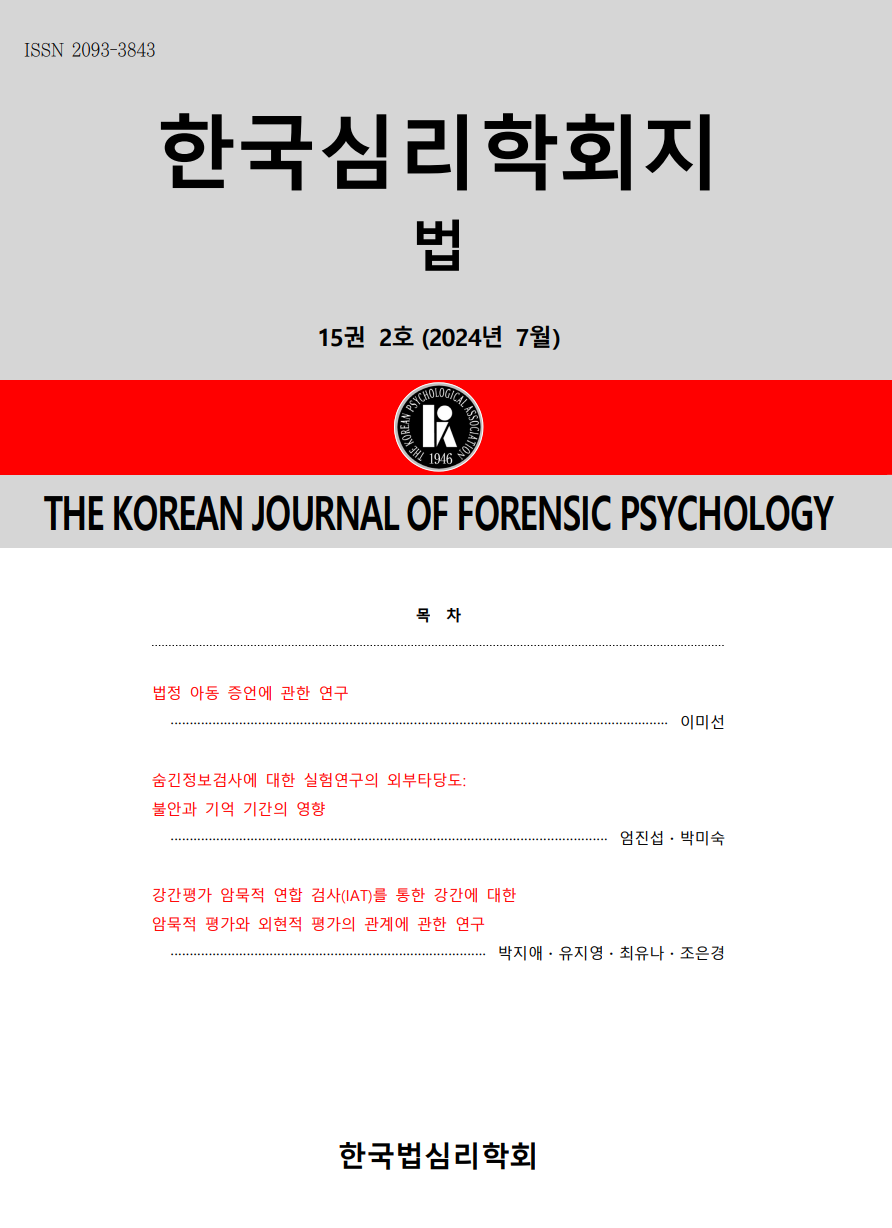open access
메뉴
open access
메뉴 ISSN : 2093-3843
ISSN : 2093-3843
Previous studies showed that people tend to pay irrational attentions to irrecoverable past investments, called as sunk costs, while making decisions. The purpose of this study was to examine the vulnerability of Korean lawyers to sunk costs including both sunk money and sunk time. Fifty five Korean lawyers and sixty lay people completed a survey consisting of a measure of the vulnerability to sunk costs and a regret-based decision making style scale. Results indicated that lawyers exhibited the vulnerability to both sunk money and sunk time whereas lay people showed greater sunk money effects than sunk time effects. Additionally, lawyers with greater regret-based decision making styles were more vulnerable to both sunk money and sunk time compared to those who with weaker regret-based decision making tendency. Implications, limitations and possible future studies were also discussed.
임혜빈 (2016). 한국형 의사결정유형 척도 타당화 연구. 한국심리학회지: 소비자․광고, 17(3), 441-461.
Arkes, H. R., & Blumer, C. (1985). The psychology of sunk cost. Organizational behavior and human decision processes, 35(1), 124-140.
Arkes, H. R. (1991). Costs and benefits of judgment errors: Implications for debiasing. Psychological bulletin, 110(3), 486-498.
Arkes, H. R., & Hutzel, L. (2000). The role of probability of success estimates in the sunk cost effect. Journal of behavioral decision making, 13(3), 295-306.
Babcock, L., & Loewenstein, G. (1997). Explaining bargaining impasse: The role of self-serving biases. The Journal of economic perspectives, 11(1), 109-126.
Bentler, P. M., & Bonett, D. G. (1980). Significance tests and goodness of fit in the analysis of covariance structures. Psychological bulletin, 88, 588-606.
Bentler, P. M. (1990). Comparative fit indexes in structural models. Psychological bulletin, 107, 238-246.
Browne, M. W., & Cudeck, R. (1992). Alternative ways of assessing model fit. Sociological methods and research, 21, 230-258.
Bruine de Bruin, W., Parker, A. M., & Fischhoff,B. (2007). Individual differences in adult decision-making competence. Journal of personality and social psychology, 92(5), 938-956.
DeVoe, S. E., & Pfeffer, J. (2007). When time is money: The effect of hourly payment on the evaluation of time. Organizational behavior and human decision Pprocesses, 104(1), 1-13.
Fox, C. R., & Birke, R. (2002). Forecasting trial outcomes: Lawyers assign higher probability to possibilities that are described in greater detail. Law and human behavior, 26(2), 159-173.
Gourville, J. T., & Soman, D. (1998). Payment depreciation: The behavioral effects of temporally separating payments from consumption. Journal of consumer research, 25(2), 160-174.
Kwak, J. (2008). Sunk cost effects in consumer decisions: role of anticipated regret. Proceedings of the advances in consumer research, 35, 719.
Nygren, T. E. (2000, November). Development of a measure of decision making styles to predict performance in a dynamic J/DM task. Paper presented at the 41st Psychonomic Society Meetings, New Orleans, LA.
Nygren, T. E., & White, R. J. (2001, May). Decision making styles and choice behavior in gambling tasks. Paper presented at the 73rd Annual Meeting of the Midwestern Psychological Association, Chicago, IL.
Okada, E. M., & Hoch, S. J. (2004). Spending time versus spending money. Journal of consumer research, 31(2), 313-323.
Soman, D. (2001). The mental accounting of sunk time costs: Why time is not like money. Journal of behavioral decision making, 14(3), 169-185.
Staw, B. M. (1981). The escalation of commitment to a course of action. Academy of management Review, 6(4), 577-587.
Sternlight, J. R. (2012). Psychology for Lawyers:Understanding the Human Factors in Negotiation, Litigation and Decision Making. American Bar Association Publications.
Wegener, D. T., & Petty, R. E. (1997). The flexible correction model: The role of naive theories of bias in bias correction. Advances in experimental social psychology, 29(1), 141-208.
Wistrich, A. J., & Rachlinski, J. J. (2013). How Lawyers' Intuitions Prolong Litigation. Southern california law review, 86(571), 13-91.